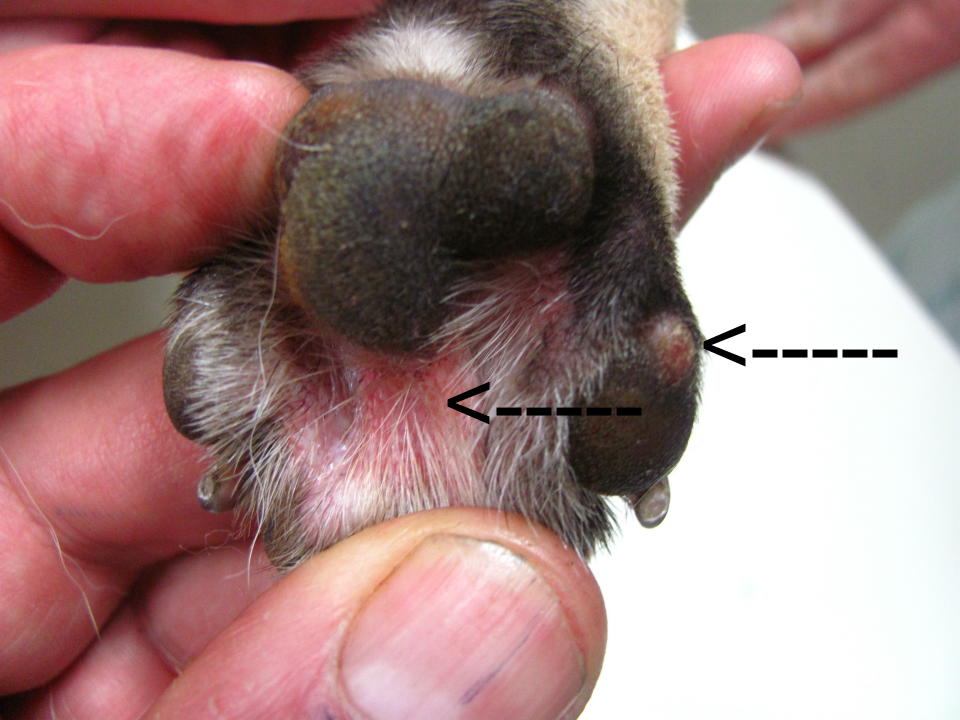Is Your Dog's Paw Sore Between the Toes? Here's What to Do
We've all been there. You're enjoying a walk with your furry best friend when you notice them limping. A quick look reveals a sore, red area between their toes. Suddenly, your carefree stroll turns into a worried quest for answers: What caused this? Is it serious? And most importantly, how can you help your pup feel better?
Just like our feet can get irritated, dogs often experience discomfort between their toes. It's more common than you might think, and the good news is that it's often easily treatable. But understanding the cause is key to effective treatment.
Several things can lead to a sore dog paw between the toes. One common culprit is allergies. Just as humans can have allergic reactions to pollen, dust, or mold, our canine companions can be sensitive to things they encounter in their environment. These allergens can cause itching and inflammation, particularly in areas where the skin is thinner, such as between the toes.
Another frequent offender is something we might not even notice: small objects lodged between the paw pads. Tiny pebbles, thorns, pieces of glass, or even just a bit of debris can cause significant discomfort and lead to infection if not removed.
Of course, injuries are always a possibility. A cut from a sharp object or a burn from hot pavement can quickly turn a pleasant walk into a painful experience. And let's not forget about parasites! Pesky critters like mites, fleas, and ticks can also irritate the skin between the toes, causing itching, redness, and even hair loss.
Recognizing the signs of a sore paw is crucial. Limping is often the most obvious indication, but some dogs might be more subtle, licking or biting at their paws excessively. If you notice any redness, swelling, discharge, or a foul odor, it's essential to take action.
If you suspect something is lodged in your dog's paw, carefully try to remove it. However, if you're unsure or the object is embedded deeply, it's best to leave it to the professionals and consult your veterinarian.
For mild irritation, there are some things you can do at home to provide relief. Soaking the affected paw in warm water with Epsom salt can help soothe the area and reduce inflammation. After soaking, thoroughly dry the paw, paying close attention to the space between the toes.
Applying a pet-safe antiseptic spray or ointment can help prevent infection. It's also essential to keep your dog from licking or chewing the area, as this can delay healing and potentially introduce bacteria. An Elizabethan collar, often affectionately referred to as a "cone of shame," might be necessary to prevent your dog from bothering the affected paw.
While home remedies can be helpful, it's crucial to consult with your veterinarian if your dog's paw doesn't improve within a few days or if the symptoms worsen. Your vet can determine the underlying cause of the discomfort and recommend the best course of treatment, which might include oral or topical medications to address allergies, infections, or parasites.
Taking care of your dog's paws is an essential part of responsible pet ownership. Regularly inspecting their paws, especially after walks, can help prevent issues from arising in the first place. Trimming the hair between their toes can also help prevent mats and tangles, which can trap dirt and moisture, creating a breeding ground for bacteria and yeast.
Remember, your dog relies on you to notice when something is wrong. By paying attention to their behavior and taking prompt action, you can help keep them happy, healthy, and ready for many more adventures together.
Ocean county recent arrest
Unleash your creativity the magic of fairy coloring pages dibujo de hada para colorear
Half sleeve hood tattoos a comprehensive guide













